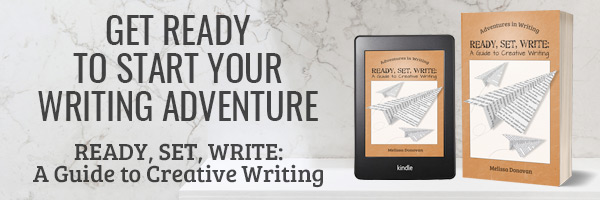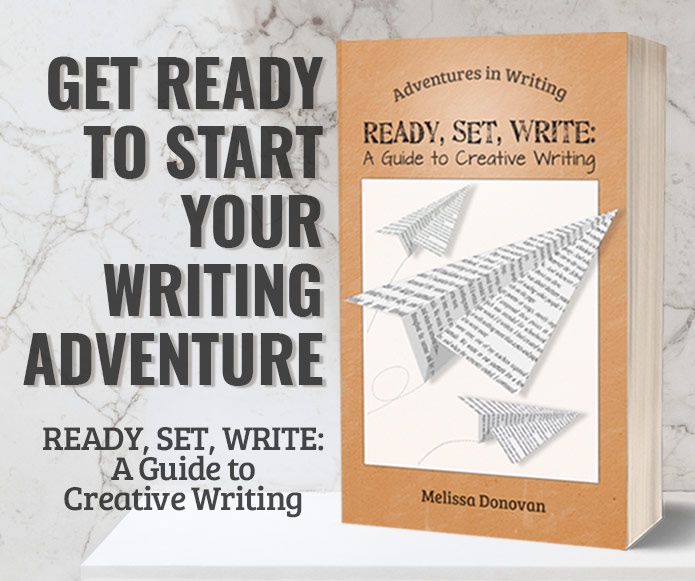What is art?
People have been trying to answer that question for centuries, but we still don’t have a definitive answer. We know art is borne of creativity. It’s meant to impact whoever is experiencing it. And it comes from a place within the artist that we don’t truly understand.
Art remains a mystery, both in its definition and its origin. Why is art a cornerstone of every culture on Earth? Why are some people drawn to making art while others prefer to sit in the audience? Why do people need art, whether it’s music, films, paintings, sculptures, dance, or literature?
The Commercialization of Art
We all know what commercialism is. It’s the intent to make money, preferably lots of it. Traditionally, art was safe from commercialism. Big business just wasn’t interested, and artists could freely create. The market was open and it decided who succeeded and who didn’t. Fine art rose to the top.
But once the money makers filled up all the shelves in the grocery markets and lined all the racks in the department stores, they turned to art, and they commercialized it.
Screenplays were streamlined into formulas. Big publishing houses tried to figure out which books would turn the fastest and easiest profits. Clear Channel bought up all the radio stations and started using bottom lines and internal agendas to decide which songs the public would listen to.
And artists took jobs at advertising agencies. Filmmakers created 30-second mini-movies called commercials. Songwriters penned jingles. Writers crafted slogans. And illustrators developed logos.
In a world driven by commerce, art became a commodity. Some artists cried out in protest, claiming that commercialized art was dumbing down the masses. The purpose of commercial art is not to get people to think or feel. It doesn’t care if it changes the world or makes a profound statement about humanity or nature. All it wants to do is get people to buy.
Fine Art vs. Commercial Art
Everything we humans create has some basic purpose. Commercial art exists to make money. Its motivation is revenue. Fine art exists because people need to articulate their thoughts, feelings, and ideas. Its motivation is expression.
While the definitions of commercial and fine art are pretty clear, the lines between them are actually so blurry, it can be difficult to tell the difference. If you and I worked our way through the Times bestseller list in an attempt to classify each book as either commercial or artistic, I bet we’d disagree a few times.
Can we define that gray area that connects yet separates fine and commercial art? Can we then apply it to our own creative writing?
Art and Commerce in Creative Writing
Sometimes I talk to writers who have wild ideas about the stories they want to tell. Their imaginations are bustling with characters, scenes, and themes that are inspired, unique, and original. But they’ll say, “Nah, it’ll never sell.” On the other hand, I regularly get emails from aspiring writers who tell me, “I think my story idea will be a bestseller.”
Whether or not the book will sell appears to be a more significant consideration than whether it’s a good story — or whether it’s any good as a piece of art.
Is one better than the other?
You have to answer that question for yourself. Personally, I love all types of art. I think sometimes the big money makers were genuinely inspired by something other than money. And occasionally, the art that was supposed to make a mint barely turns a dime. The world keeps on spinning.
What Drives Your Writing: Art or Commerce?
Some creators are vying for commercial success; they want to be stars, or maybe they just want to eke out a living with their art. Others want to express their visions; they want to share some piece of themselves with the world. All over the planet, they are making their art.
I wonder how many artists have contemplated their motivations. I wonder if you have. Do you give much thought to whether your work will make you rich someday? Do you continue to create because you simply have to? Or are you somewhere in the middle, hoping to be able to find a way for your creative writing to pay the bills while sticking to your vision?
I don’t particularly care whether a piece of art was motivated by love or money. My music, book, and film collections are a healthy mix of big hits and underground or counterculture favorites. When I’m in the audience, it’s not about what motivated the artist. It’s about how the art affects me.
But when I’m sitting at my desk writing a poem or drafting a story, I care very much about the artist’s motivation.
So, what motivates you?






I personally write because I have to. It’s always been my channel and I couldn’t stop even if I was never published. I wonder if other artists feel the same.
But when I’m reading or watching or listening to someone’s art, I don’t think about their motivation. I just enjoy the art as well.
We’re on the same page.
Great post!!
You can stop wondering, Hannah……….I feel exactly the same way as you do, and I’m sure there are many more like me. The muses visit me whether I want them to or not. I’ve been writing one thing or another for close to 50 years, and sometimes tried to get published, but always found that it was ‘who you knew’ that got you in, and I learned that to ‘travel & schmooze’ required a lot of money, and that seemed to be the only advice I was given in order to find connections. That was before cyberspace became so usable.
Over the course of my life, many people close to me enjoyed my writings – the many songs and stories I wrote – and, yes, I would love to have shared them with the rest of the world, even without compensation.
But there are so many rules these days, and so many writers, I find that such a dream is usually in a distant future, and I’m not getting any younger. Irregardless, I have recently decided to try again to eventually find a publisher for a novel series I began for kids from 10 to 14, but since I’m an unpublished writer, I apparently need to do other things first — like join a group of writers in this genre, and try out for writing contests…and research research, research!
I have placed this website in my favourites, and I believe it’s a good start….any suggestions that anyone may have for me would be welcome!
Pat, I think you’re off to a good start by getting around the internet and interacting with other writers online. You might think about getting a website or a blog and working toward building an audience and/or a network of writer friends. If you can build an audience, then you have a platform, and publishers are more likely to take interest in your work. Or you can self-publish for your audience. A network of writer friends can help you hone your writing, offer insight into getting published (or fulfilling any of your other writing goals), and can simply offer support. If you’re not tech-savvy, you can visit wordpress.com and get a free blog to get started. One thing I would recommend is add to your reading list something to help you learn the basics of blogging. I see a lot of folks jump into it without knowing how the blog communities work and failing to adopt best practices, so it’s helpful if you put in a little time (and it will benefit your writing as well!). Good luck!
Thanks, Hannah! I think we all care more about our own motivations than we do about others’, although I am sure there are plenty of exceptions!
I create stuff because a thought pops into my head and I want to share it with people. So, I will not create something if I believe nobody is going to read/watch/see it. It doesn’t take a big audience though. More than once I have cut together videos based on inside jokes only understood by two or three other people, while the rest of the world would just go “huh?” if they ever see it. I do it anyway, because I want to share that thought with someone, even if it’s just one other person.
That’s an excellent approach. I create whether I intend to share it or not, although sometimes I don’t get further than jotting down an idea or two.
My motivation is really just giving my best where I have my best to give. I figure we only live once so make the most of it, and I want to lift others up along the way.
You have a great attitude, J.D., and your words and ideas always inspire me!
I think artists who don’t see marketing as a form of expression are missing out. How will they ever get their products to the people? I write for a local marketing / advertising company and I love marketing. I see it as a form of self expression and I am always looking for businesses who are willing to be more creative in the way they address their customers and potential customers. Social Media has put a positive light on the way businesses promote themselves and it lends a personal edge to communication and commerce. I recently wrote about these topics on by blog. I believe that your marketing should be artful and your art should express your marketing. I don’t see advertising as just a craft. Done well, it is the art of commerce and where would we be without commerce?
I see marketing as a form of sharing rather than expressing. For writers, the expression is in the work; the marketing is the effort to share that work. Maybe I’m nitpicking over semantics…artists in general struggle with sales and marketing. They just want to create! You’re right: if they view marketing as part of their art, then they could reach a broader audience. Great insight, Nicole!
I feel that art is from heart and then on secondary basis its created as per the individual requirement.The core of art lies in a fertile creative mind and its myriad hues. Its marketing part is important because Art needs appreciation, be in the form of words or cash.Both are important.
I agree that marketing is important for artists who want to make a living with their art. Artists who create as a hobby or who have other sources of income may not want to market their work, but for the rest of us, we have to be a little business-minded to succeed.
I like this article especially this art definition, keep blooging Melissa ..
Thanks, Aggour.
My engagement in art is because I want to share my story. This is my motivation. If it were the money, there is no doubt that I would have quit a long time ago because there does not seem to be enough of it coming in yet. I would like to think though that most artists do not engage initially in it because of the money to be made. It usually starts with having a love for it, and if money comes along as a result, so much the better. There is nothing more preferable afterall than making working on something that you have a passion for and making more as a result.
Let me also say that I very much appreciate what you are doing here. Your blog has been the first opportunity for me to come close to the techiques in creative writing. I write, but I have no idea what genre my writings would be classified as. Bless…
Thanks for your kind words, Chijioke. I think the need to create is what drives most artists, including writers.
My writing serves as a way to share a piece of myself with others. I enjoy creating poems and stories, but I also hope one day to make a living at it. For the past three years I’ve been submitting my works to various writing contests and small literary journals, but haven’t yet gotten published. I can’t imagine quitting something I feel is so important to me, so the only choice is to keep trying.
Yes, keep trying! There are writers who don’t get published for ten or twenty years. Just stick with writing, study the craft, and you’ll get there.